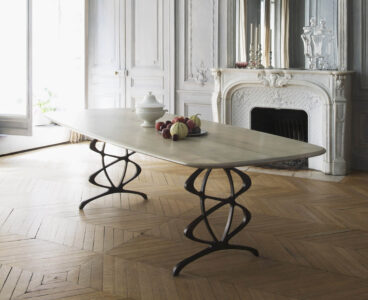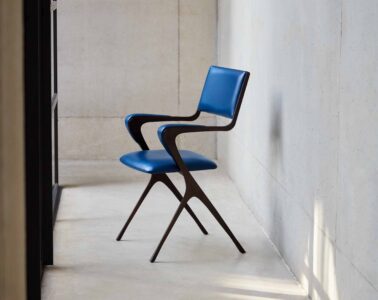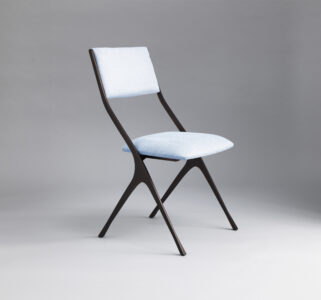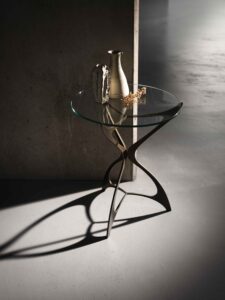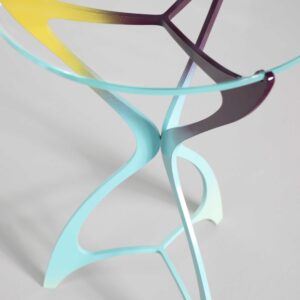The Art Nouveau is a movement which, like many decorative styles, has received more credit retrospectively than it did in its heyday. It was at its height from about 1890 to 1910, though with hindsight being 20/20, many critics began to engage with it in earnest towards the 1960s. Most think of it as a European phenomenon, first and foremost. We find early examples of the Art Nouveau in Brussels, like the decorative work of Victor Horta, for one. From here it rippled out to Paris, where, at the hands of Hector Guimard, it left its mark on the city’s metro system, among other things.
The story of the Art Nouveau, however, begins well before it took shape under such a name. It’s a more British phenomenon than one would think, drawing on the decorative work of William Morris in the late 19th century. His Red House was a key point of reference, for example. The art critic John Ruskin also had a sizeable influence on the movement’s key themes and sensibilities. Even Pre-Raphaelite artists like Dante Gabriel Rosetti had some serious sway over the style which would become the Art Nouveau.
Today, we’ve come full circle. As a British furniture designer, Tom has looked to European footholds of the Art Nouveau for inspiration. The philosophy surrounding the movement chimes exceptionally well with his own ethos around making things. The style drew upon the ideas of French architectural theorist, Eugène Viollet-le-Duc, who had a few clear tenets for design which are echoed in Tom’s approach. Viollet-le-Duc believed function should define form. He also championed the blurring of lines and hierarchies within the arts, holding the decorative on par with ‘fine’ paintings and sculptures. He suggested architects look to the logic of nature to inform their own creations as well. These three points are embedded in Tom’s practice, as he often looks to nature to inspire his functional designs, ever pursuing that delicate balance between beauty and utility. And so, the Art Nouveau was a natural source of creative fuel for Tom, which has fed into his own contemporary adaptations. Read on to get a feel for the nouveau Art Nouveau…
Vienna Dining Table
The Vienna dining table has its roots in one of the capitals of the Art Nouveau movement: Vienna, of course. The style itself took inspiration from the ebb and flow of nature, in all its curvaceous, free-wheeling forms. The Vienna design is a reflection of these inclinations to emulate those same flowing shapes we still see in the wild today. The base is composed of slender tendrils of metal, which intersect and intersperse to dynamic, whiplash effect. They support a rectangular top that gently curves around the corners. This softness of form creates a harmonious effect, staying in step with the quintessential qualities of the Art Nouveau.
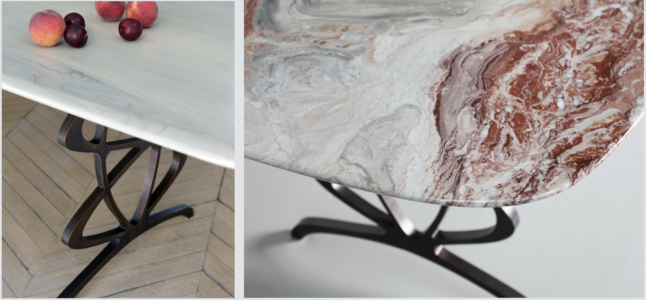
Details of a Vienna dining table finished in ‘Dark Bronze’ with a harewood top (left) + ‘Antique Bronze’ with a Rosso Oribico marble top (right)
Vienna Carver Dining Chair
Our Vienna dining chair is, naturally, the dining table’s stylistically symbiotic mate. It sits perched upon a framework of svelte lines, which smoothly narrow and expand to create a subtle sense of movement. The carver iteration plays on the same whiplash format of the dining table, applying this soft zigzag to form elegant armrests. These emerge from two twin shafts of metal extending down the sides of the seat. They then fork to form legs with gently flared feet. The result is a dining chair with a bit of lean to it, upholstered for a soft seat and covered with premium materials like traditionally tanned leather. It’s a comfortable creation that serves its function well, while occupying an eye-catchingly evocative form.
Vienna Dining Chair
The Vienna non-carver dining chair is a sublimely simple design. It’s the product of applying key elements of Modernism to the Art Nouveau. This is a pared-back take on what is usually a rather decorated, if at times bombastic aesthetic. It remains emphatic in form, however foregoes extra trills and frills for an especially sleek and refined look. Its beauty lies in its functionality and meticulous craftsmanship, with crisp lines and carefully considered curves. It retains that slightly spindly quality of the Art Nouveau, with its frame forking and flaring in all the right places.
Opera Side Table
The Opera side table takes its name from Vienna’s famous musical tradition, and the architectural marvels which play host to it. The design itself harnesses the slim, flowing lines of the Art Nouveau, taking on a refined hourglass form. The framework of the base folds back on itself at the edges, forming hornlike extrusions which act as feet as well as a platform for the circular glass top. Its petit footprint and neatly cinched form make it a function-forward piece, which nips in against a seat to support your necessities of the moment. It brings a slightly futuristic flavour to the Art Nouveau aesthetic, applying the style’s vernacular in a refreshing new manner for the modern age.
Text by Annabel Colterjohn
